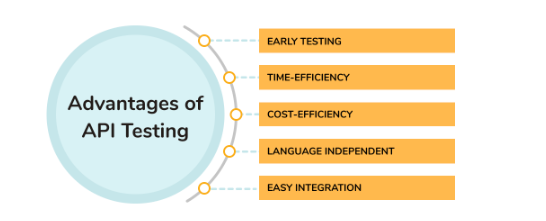

API Testing
Jun 28th, 2023
An application programming interface (API) is a piece of software that lets applications and services interact with each other. They provide the interface that facilitates data and logic transfer among diverse hardware and software systems.
For example, a mobile banking app uses an API to access your phone’s camera so you can take a picture of a check and deposit into your account remotely. Without APIs, the seamless digital interactions we enjoy every day with our computers, smartphones, TVs, and other devices, would not be possible.
WHAT IS API TESTING?
API testing helps developers to determine whether APIs meet expectations for functionality, performance, reliability, and security. The intention is to find bugs and any other unexpected behavior so your users don’t end up with a bad or insecure product. You want to make sure that you release APIs that work efficiently and effectively, or they won’t be adopted.
But API testing might not be as easy to do as it sounds. APIs typically use protocols and standards that you may not normally work with. These protocols and standards are needed so that different platforms, applications, and systems can talk to each other. So not only do you need to test an API’s functionality, you need to test its performance, security, and how all of the components work together to create a reliable interface.
WHAT ARE POPULAR API TOOLS?
Postman: A comprehensive API testing tool that enables developers to create and manage API tests.
SoapUI: An open-source API testing tool that offers both functional and performance testing capabilities.
Apigee: A cloud-based platform that offers API testing, management, and analytics services.
Assertible: A tool that provides automated API testing and monitoring.
JMeter: An open-source tool for load testing and performance testing of APIs.
Testim.io: A platform that uses artificial intelligence to create and execute API tests.
Parasoft SOAtest: A comprehensive tool for testing APIs, web services, and microservices.
When choosing an API testing service, it's important to consider factors such as the features offered, ease of use, and pricing.
BENEFITS OF API TESTING
Ensuring API functionality: API testing helps ensure that the API is functioning as intended, by verifying that the responses from the API are as expected.
Identifying issues early: API testing can help identify issues early in the development cycle, allowing for quicker resolution of issues and reducing the overall development time.
Streamlining testing: API testing can be automated, which can save time and resources compared to manual testing.
Improved collaboration: API testing allows developers and testers to work together more efficiently, by providing a common understanding of the API and its behavior.
Better user experience: Testing APIs ensures that the API is providing the expected response to client applications, which can help provide a better user experience.
Cost-effective testing: Testing APIs is usually less resource-intensive than testing a complete application, making it a more cost-effective option for testing.
Increased security: API testing can help identify potential security vulnerabilities, allowing for early detection and remediation of security issues.
Better user experience: Testing APIs ensures that the API is providing the expected response to client applications, which can help provide a better user experience.
Cost-effective testing: Testing APIs is usually less resource-intensive than testing a complete application, making it a more cost-effective option for testing.
Increased security: API testing can help identify potential security vulnerabilities, allowing for early detection and remediation of security issues.


